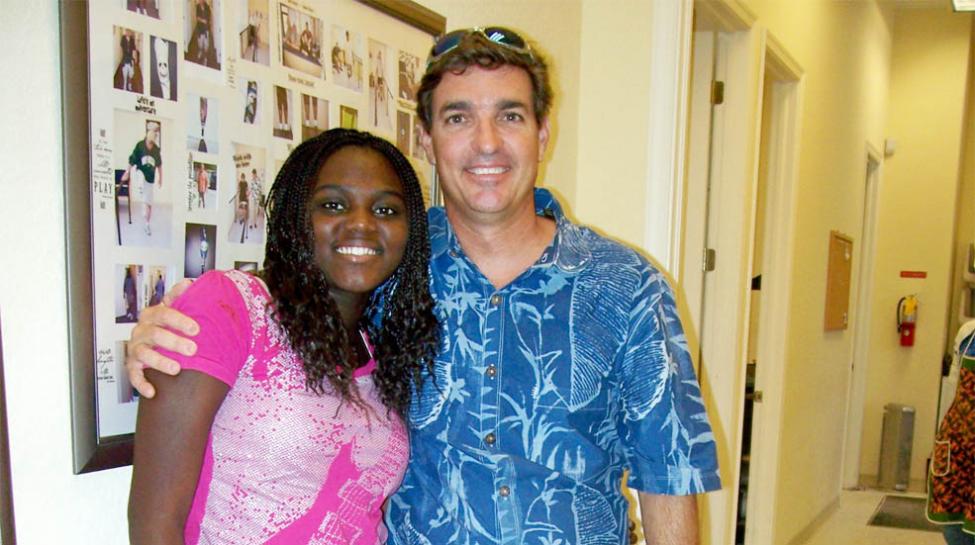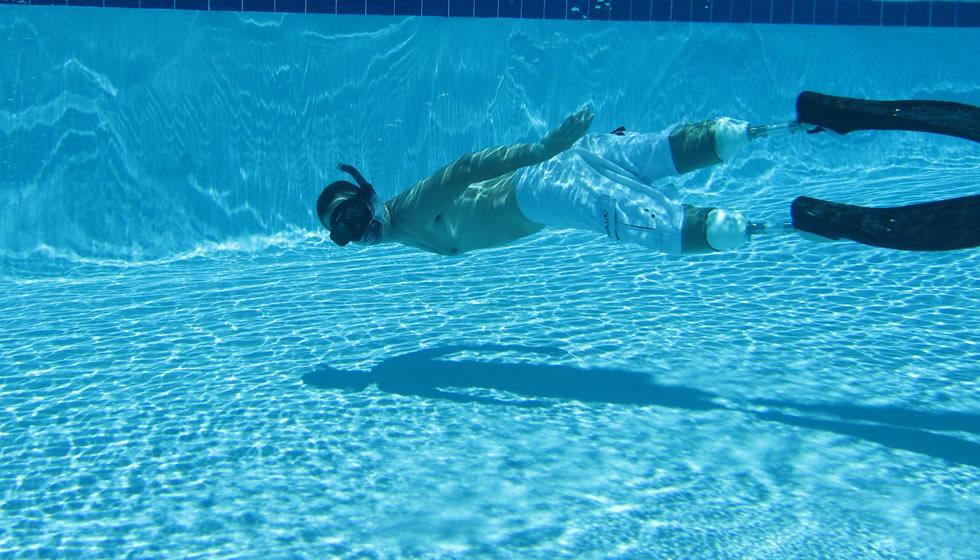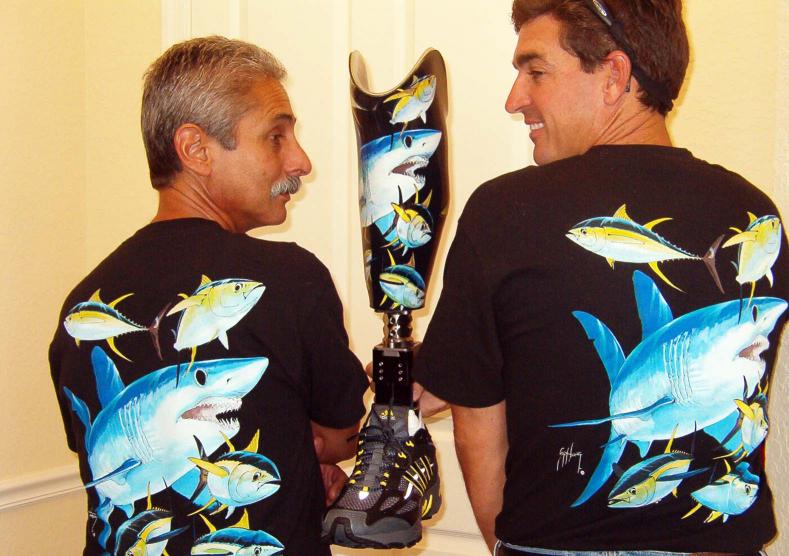Will my insurance cover my prosthesis?
Yes, in most cases, we are providers for many insurance company’s Your evaluation is always free of charge and we will never file insurance for your consultation. When Matt and you decide on what your needs are, and what kind of prosthesis will be best for you, we will take care of getting your insurance authorized and will let you know if there will be any balance due by you after your insurance pays.
What resources are available on line for me to learn more about Prosthetics and Orthotics?
Amputee Coalition of America
American Academy of Prosthetics & Orthotics - Online Library - American Academy of Orthotists & Prosthetists
Clinical Prosthetics & Orthotics - O&P Virtual Library
O&P Business News
Eastern Michigan University Library - Orthotics and Prosthetics Research
Orthotics & Prosthetics Information - O&P.com
What can I do to prepare myself for a prosthesis?
There is a lot you can and must do to be able to use a prosthesis and use it well. The top priorities are:
- working through the feelings about losing a limb and deciding how to rebuild your life after amputation
- exercising to build the muscles needed for balance and ambulation
- preparing and taking care of your residual limb to attain a proper sound shape for the prosthesis
- learning proper body positioning and strengthening to maintain tone and prevent contractures
Can the limb break down?
Yes, things can happen that will require repair or replacement so it is a good idea to know about warranties and what to expect from your prosthetist. Get small problems with your prosthesis taken care of promptly. There is no benefit to waiting until something falls apart or causes you serious skin breakdown. If you wear a prosthesis too long when it needs repairs or replacement you can do harm, not only to your residual limb, but also to other parts of your body. Strain on other muscles, especially in your back and shoulders, will affect posture in addition to performance of the device and energy to use it. Early prevention is more valuable than long term treatment.
Once I have been fitted and feel comfortable in its function, what will happen next?
Plan on making follow up visits to your prosthetist a normal part of your life. Proper fit of the socket and good alignment will insure that the prosthesis is useful to you. Prostheses, like cars, need regular maintenance and repair to continue efficient functioning. Small adjustments can make a big difference.
Will I need to use a wheelchair or crutches?
Some people elect not to use a prosthesis, relying exclusively on mobility devices. However, with a prosthesis the use of crutches or a wheelchair depends on several factors including level of amputation, whether you have a single or bilateral amputation, and your respective level of balance and strength. Most amputees have a pair of crutches for times when the limb is off, including nighttime trips to the bathroom, showering, participating in certain sports, and to help if problems arise that may require leaving the prosthesis off for any length of time.
If you are a person who has lost both legs, you will probably use a wheelchair at least some of the time. Unilateral amputees may find it helpful to use a cane or crutches for balance and support in the early stages of walking or just to have a break from the prosthesis. This is an individual decision based on factors such as age, balance, strength and sense of security.
Is it difficult learning to use prosthesis?
Learning to use a prosthesis is a tough job. It takes time, great effort, strength, patience and perseverance. It is much like learning how to operate a car, you will need guidance on how to:
- take care of the prosthesis
- put on (don) and take off (doff) the prosthesis
- walk on different types of surfaces, including stairs and uneven terrain
- handle emergencies safely, including falling down and getting up again
- perform daily activities at home, at work and even in a car
- investigate new things you may be uncertain of, including sports and recreational activities
How long will my prosthesis last?
Depending on you age, activity level and growth, the prosthesis can last anywhere from several months to several years. In the early stages after limb loss, many changes occur in the residual limb that can lead to shrinking of the limb. This may require socket changes, the addition of liners, or even a different device. Later on, increased activity level and desire for additional function can necessitate a change in the prosthesis or it parts. Once you re comfortably adjusted and functioning at the desired level of activity, the prosthesis needs only minor repairs or maintenance and can last for an average of three years.
What if the prosthesis doesn’t fit right?
Follow up is as important as the initial fitting. You may need to make several visits for adjustments with the prosthetist. They can help you ease pressure areas, adjust alignment, work out any problems, and regain the skills you need to adapt to life after limb loss. Tell your prosthetist is your limb is uncomfortable, too loose or too tight.
When will I get my prosthesis?
Generally, you should be ready for prosthetic measurements and fitting a few weeks after surgery, when the wound is healed and the tissue swelling is decreased. Then you will be ready for prosthetic measurements and fitting. This process can be easily attained
with exercise and rehabilitation. During this stage, your medical team also will be concerned with maintaining proper shape of the residual limb, as well as increasing overall strength and function. Fitting is usually stress free and involves several steps to create a unique prosthesis for you.
How does a prosthesis work? Will I be able to do all the things I did before I lost my limb?
The majority of people who lose a limb can get back to a normal mode of functioning within a few to several months, depending on the location of the amputation as well as physical ability. How well they function depends primarily on their goals along with timely, comfortable prosthetic fitting, good follow up care and a “can do” attitude from themselves as well as their medical team.
Will I need to see a Physical Therapist once I receive my prosthesis?
Your prosthetist will make that decision with you after he evaluates your ability to walk with your prosthesis.
What does prosthesis look like? How will it stay on?
Depending on the level of your amputation, physical ability and functional needs, each prosthesis will be somewhat different. If you desire a “cosmetic look” prosthetic supplements are available. But, for the most standard prostheses, they are comprised of conventional component parts attached to a socket that fits over your residual limb.
What happens after the amputation? Is there a prosthesis available that can make me feel just like I was before?
A prosthesis is an artificial replacement for a missing limb or part of a limb. Although a prosthesis is never as natural as your own limb, it can help you do many things quite effectively if you are willing to combine your energy and willpower into learning how to use it. The most important aspect of success is working with your doctor, prosthetist and therapist to address all of your concerns, and then to work with them on the process of design, fitting and training, which are required to be a successful user.












